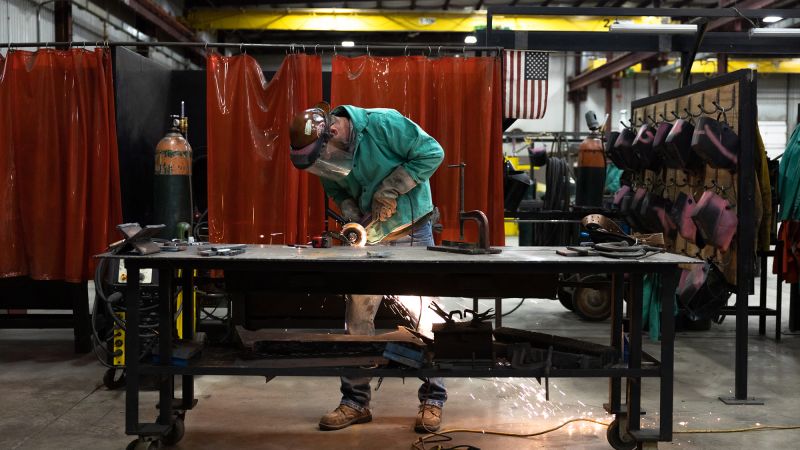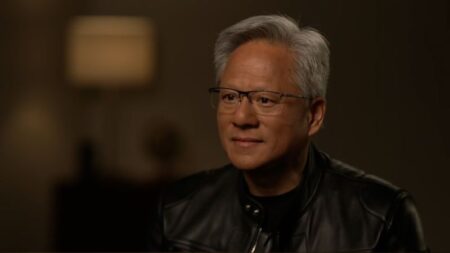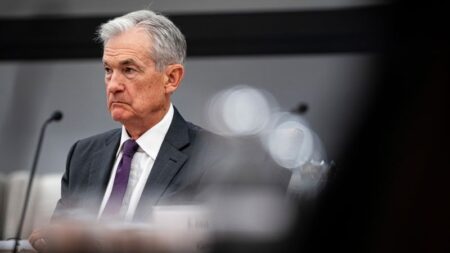President Donald Trump’s ambitious tariff campaign aimed at rejuvenating American manufacturing has hit a snag, evidenced by a sluggish start in restoring the jobs that many had hoped it would generate. While economic recovery often requires patience to fully observe its effects, initial outcomes indicate that tariffs have not only failed to stimulate a hiring surge but have also created an environment of uncertainty, leaving businesses paralyzed in their decision-making.
The chaotic implementation of tariffs seems to exacerbate the existing long-term pressures on U.S. manufacturing, as remarked by economists and trade analysts alike. When tariffs were dramatically elevated to levels unseen in nearly a century, the manufacturing sector paradoxically experienced the loss of approximately 14,000 net jobs during May and June. Overall, employment figures in manufacturing have remained largely unchanged since Trump assumed office in January. Factory hiring reached an alarming low in May, reflecting a pace weaker even than during the Covid-19 pandemic, showcasing hiring rates that haven’t been this bleak since the Obama administration.
Compounding the issue, job openings in the manufacturing sector—a critical indicator of future hiring trends—have plummeted by nearly 100,000 since the inception of Trump’s presidency. Instead of incentivizing employers to hire, the erratic nature of trade policies has sown confusion among business leaders who are seeking clarity on the enduring state of tariffs. Observers note that without a stable framework, company executives are left guessing about their hiring prospects for both the near and distant future.
One prominent voice in the discourse, Betsey Stevenson—a professor at the University of Michigan who previously served as chief economist at the Labor Department under Obama—asserted that the government’s uncertainty is economically detrimental. Manufacturing executives have echoed similar sentiments, expressing their frustrations regarding unclear regulations that inhibit their ability to predict demand and determine workforce needs. A recent survey from the Institute for Supply Management highlighted a feeling of paralysis within the industry, where executives lamented halted sales, particularly in global markets.
During this tumultuous period, President Trump has threatened hefty tariffs against various countries, including significant levies on imports from Brazil, a nation with which the U.S. traditionally enjoys a trade surplus. The economic ramifications of these actions raise concerns about essential commodities like copper—important for manufacturing—while further escalating tensions with international partners.
The consequences of Trump’s tariff policies have invoked apprehension among economic strategists. Hardika Singh, from Fundstrat Global Advisors, remarked on the chilling effect these tariffs have had, simulating an environment of fog where businesses are hindered from making informed decisions. Although many of Trump’s policies, including tax breaks formulated to encourage domestic manufacturing, face criticism for their efficacy, advocates at the White House assert that employment indicators lag behind the potential of tax reforms promised by the administration.
As federal data suggests, the connection between tariffs and manufacturing jobs is fraught with complexity. In fact, while some policies have provided a lifeline to steel employment, they inadvertently led to significant job losses in other areas of manufacturing due to increased input costs. Stevenson pointed out that the net effect has resulted in more job losses than gains.
Robert Lawrence, a senior fellow at the Peterson Institute for International Economics, while discussing the trajectory of the manufacturing sector, expressed skepticism regarding the prospect of a hiring boom under the current policies, emphasizing that modern economic trends require a transformative approach rather than nostalgic policies aimed at resurrecting a bygone era.
As an illustration, he pointed out that manufacturing now comprises only about 7.9% of total U.S. jobs, with a noteworthy shift toward services over the past decades. Despite widespread public support for a robust manufacturing sector, many individuals express a preference for office jobs over positions in manufacturing, reflecting societal changes and values.
Finally, as evidenced in studies and global trends, Lawrence warned that simultaneous high tariffs and deteriorated international relations could jeopardize American competitiveness. The outlook implies substantial challenges ahead, with ongoing tariff strategies potentially alienating allies while creating an environment that is uninviting for both domestic and international investment.










